Network effects are defined as a phenomenon in which as more people or participants join a platform, the value of the platform and the service it offers rapidly increases.
The core idea of a network effect is that each additional user increases the value of a good or service.
Digital giants like Facebook, Uber, Google, and Amazon all harness the power of network effects.
What they all have in common is that they are platform businesses.
The concept of how a network effect works can seem difficult at first but it is really quite simple.
By understanding network effects, platform designers can plan how to rapidly scale and grow a platform. It is because of the network effect that growth marketing techniques are adopted.
There is no one definition, but a good overall explanation is below:
The two key points in this definition are that it isn’t just about adding users but rather users and usage determine a positive network effect.
A network can be large or small. Before the internet is hard to imagine a place where millions of people could easily find others. Digital technologies and the internet have radically changed and provided the backbone for a global network of interconnected networks.
What is more remarkable though has been the rise of the platform economy. More and more companies have seized on the properties that networks provide to create platforms that offer services, connect people and achieve incredible reach and scale.
There is hardly any industry that hasn’t been affected by platforms. The digital technologies that enable platforms have created a vast number of new services many of which have dramatically disrupted industries. The print industry e.g. newspapers have barely survived and those that have had to adapt to a new digital world.
But although we talk about platforms it is the network effects that provide the fuel for creating value.
Table of Contents
Why Networks Effects Are So Powerful
As pointed out by James Currier in the NFX Bible, data indicates that network effects (NFXs = Network Effects) are responsible for 70% of the value created in technology since 1994.
In fact, if you look at the companies that are currently valued at over $1 billion, most of them are platforms. There are over 400 and counting. Technology, automation, access to information and connectivity are driving the shift to platforms.
The term platform has generically been associated with network effects. There are several characteristics and types of platforms and NFX’s associated with them. I’ll break it down so we can an overview and understand how it all fits together.
Not all network effects are the same, however, and understanding them is essential for building network effects of your own into your products.
Different types of effects are stronger or weaker than others, and often they work differently.
Network Basics
If you have any interest in creating or running a platform you need to understand the NFXs that you’re subject to. You should also be looking to distinguish network effects from counterfeits and how to activate them and make them more robust.
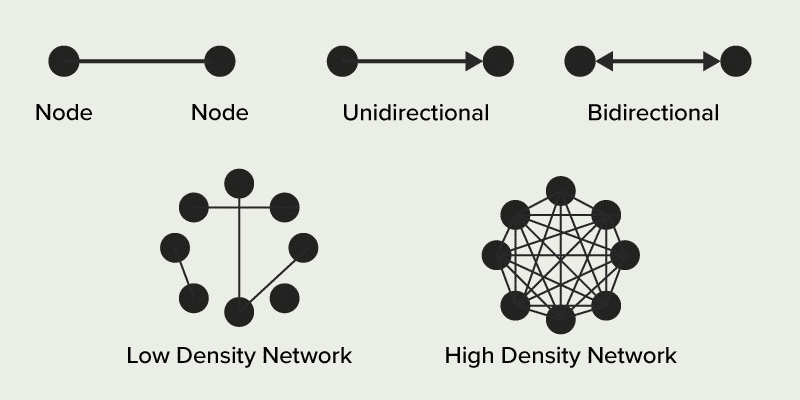
A network in its basic form consists of nodes and then connections. Nodes can be things or people. In most cases in platforms its people.
Some examples:
- Unidirectional flow – an influencer on Twitter who tweets out but doesn’t respond to anyone.
- Bidirectional – two people chatting using Facebook messenger.
The Laws of Network Effects
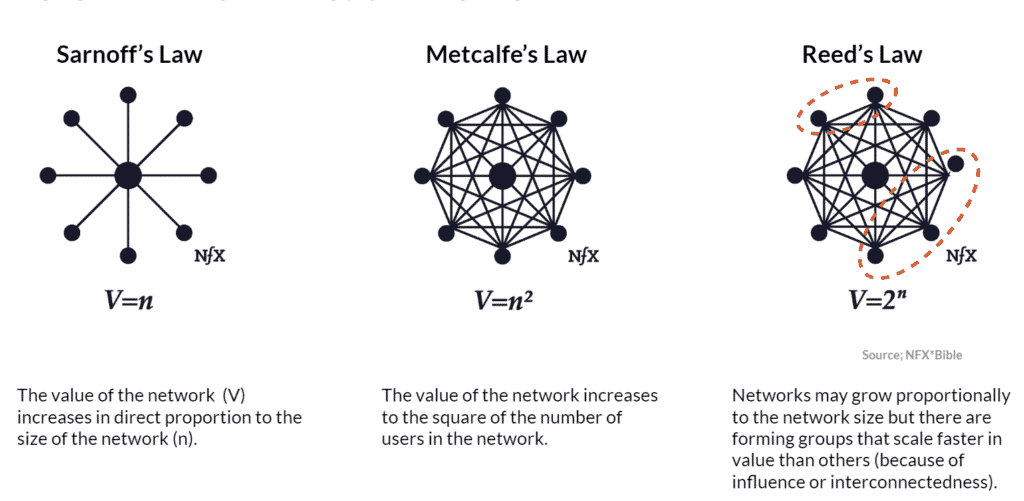
Research into networks and platforms has grown exponentially.
However, there are some notable laws that have been foundational in understanding networks.
Sarnoff, Metcalfe and Reed’s have provided simple fundamental laws that describe how network value grows in relationship with the network size and shape.
The so-called Network Effects Laws are not immutable. Some effects do not neatly fit these laws but these laws still provide some useful ways to understand networks.
Network Effects Are Not The Same As Virality
| Network Effects | Viral Growth |
| NFX are about monopoly, hacks and retention and building moats – a defensible competitive position. | Is about speed of adoption, getting as many as possible as quickly as possible. Is about cashing in. |
| Product becomes more valuable as more people use it. | Product/service may cost less to produce (economy of scale) but it does not become more valuable as more users use it or join the platform. |
| With more users there are often better engagement, usage rates, lifetime value (through feedback loops) and therefore margins. | The usage rates or engagement does not increase the customer lifetime value. |
| Network scales faster as it lowers its customer acquistion cost (pull). | The cost of customer acquisition remains. |
Network Effects are Not Economies of Scale
Economies of Scale arise when there’s sufficient volume of production to massively reduce the costs, so the largest player can maintain the best margin of profitability. Good examples of this include, Apple’s production of their phones.
Network Effects are distinct from Economies of scale because they produce greater value for the marginal increase in cost. As Networks grow larger, the cost increases, but the value of the product increases faster.
Types of Network Effects
There are different types of Network Effects that affect how a platform operates and its application.
Developing a platform strategy requires an understanding of network effects as well as network externalities. These two terms are often confused because they are both associated with the design of a platform.
If you want to understand the differences, because they are not the same, and they don’t create the same results. This short breakdown from the Stern School of Business (NYU) defines the types of Network Effects:
Direct network effect
A characteristic shared by many digital platforms is that they benefit from direct network effects. This means that a platform becomes more attractive for users as the total number of users on the same side of that platform grows.
Examples of platforms that benefit from direct network effects include social networks and communication applications like Facebook, LinkedIn, WhatsApp, and Skype.
Indirect Network Effect
Indirect networks effects are where an increased usage of one product or service also results in the generation and use of valuable complementary goods.
As the complimentary product use increases the use of the original product or service also increases.
As an example, the direct network effects associated with the Windows operating system results in the indirect networks effects for Microsoft Office. The more people that adopt and use Microsoft operating system grow the install base for MS Office.
A further example, the Amazon business model harnesses the power of both direct and indirect network effects.
Two-Sided Network Effect: Platforms
Network effects can also be two-sided: increases in usage by one set of users increases the value of a complementary product to another distinct set of users, and vice versa. In many cases, one may think of indirect network effects as a one-directional version of two-sided network effects.
This is the type of Network Effect that defines Marketplaces such as Airbnb and Uber (see the Uber Business Model). The more riders you get doesn’t improve the Uber experience but it does attract more drivers, which will improve Uber for me.
Local Network Effect
The microstructure of an underlying network of connections often influences how much network effects matter.
For example, using instant messaging each user is influenced directly by the decisions of only a small subset of other users — those they are “connected” to.
negative network
On the flip side, though, the fewer people who use Venmo, the less valuable it becomes — you can only send money through the app to a limited amount of people. The lack of people using Venmo would make the mobile payment service lose even more users.
Network Effect From Concepts To Practical Use
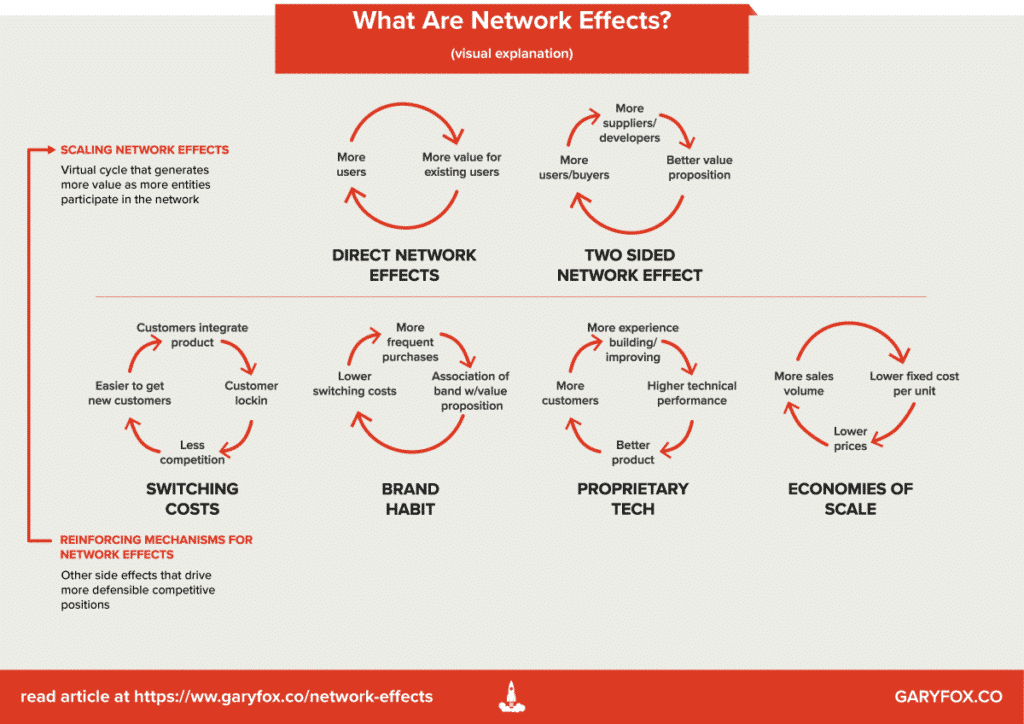
There are many other factors that contribute to the network effect. As platforms and networks grow platform owners often change the way the platform works.
As an example, Amazon initially was a platform that allowed people to easily buy books. Now they sell millions of products and also have an advertising platform. These factors affect influence, contribute and reinforce the value growth with size and participation.
These value drivers are called “reinforcing” mechanisms. As an example, the more data is available on a network, the more the platform can train an AI system to be able to become prescriptive and help the participants navigate the complexity of the network or execute particular strategic actions.
Critical Mass & the Chicken-and-Egg Problem
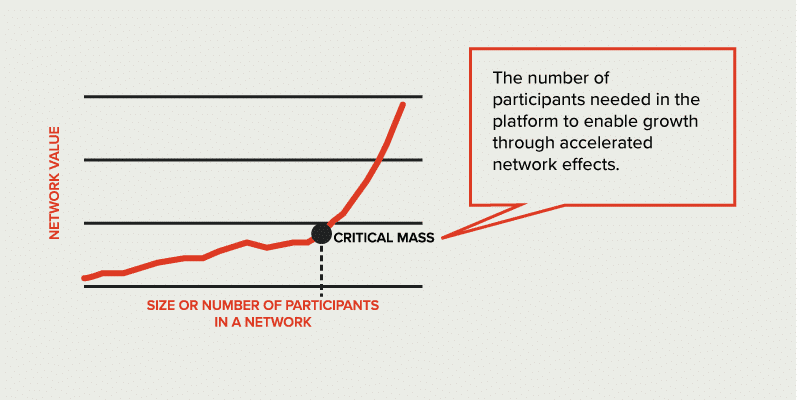
Critical Mass is often described as the number of participants or size of the network needed to allow the platform itself to auto-generate its own growth.
Critical Mass can be understood as a tipping point or threshold where a notorious change in the trajectory of a growth curve occurs and a significant increment in the value of the network happens. Critical mass is a concept of achieving liquidity (a concept overlapped with critical mass).
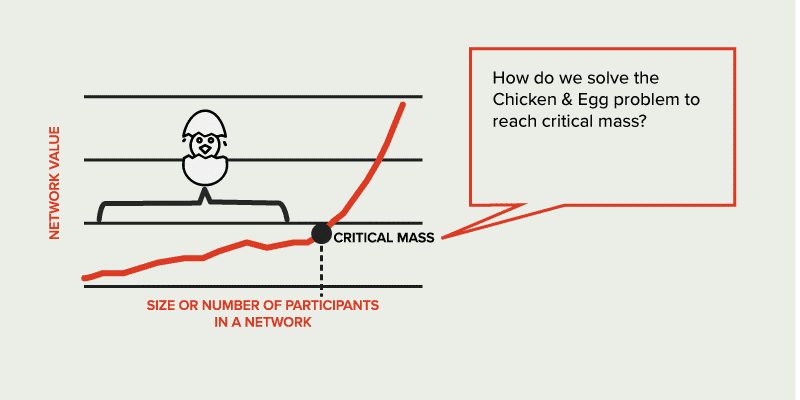
For early-stage networks, reaching this point becomes existential, especially for two-sided marketplaces where is important to attack both sides of the network. Often referred to as the Chicken-and-Egg problem is the endless chase to find out how to kick-start the flywheel when you need multiple sides of the ecosystem to join and interact through the platform.
Network Properties
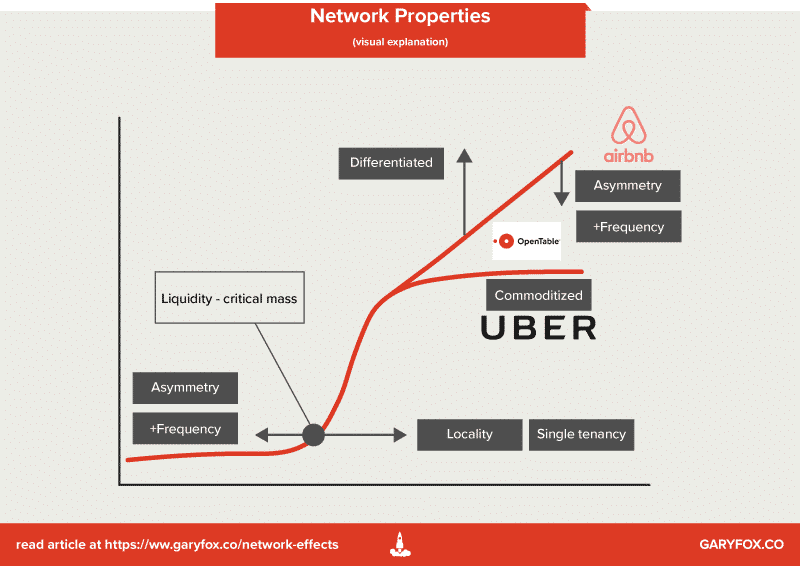
To understand which mechanisms will impact positively the growth of our network-platform and will facilitate reaching critical mass, we need to know deeply how the nature and behavior of the participants interrelate with the Value Proposition perception of the Platform. In particular, there are five essential aspects we’d like to focus on.
Example of an evolving platform Airbnb
Commoditized or Differentiated Supply

How easy is it to replicate the offering among the suppliers? This is a key question to ask. As an example while Airbnb hosts offer places to stay that are partially unique (at least in terms of position, if not vibe or host reputation) — and this is increasing with experience hosting — Uber drivers are easily replicable since the value one gets is that of getting from A to B.
Symmetry or Asymmetry of the Supply / Demand

Most of the networks have asymmetric weights of their supply and demand Asymmetry can offer a good hint in choosing what side one should attract first (we’ll talk about this later in more details)
Flexibility of Location: Locally or Globally Bound

The supply and demand of a network are also more or less attached to a certain location. Sometimes networks are highly local, other times demand (or supply) can consume or serve a more larger network.
Single Tenancy or Multi-tenancy

Multi-tenancy is when participants from the supply and/or the demand side may tend to juggle on multiple platforms to get out most of the value.
Transaction Frequency and Lifetime

Another key property of networks is the frequency of the transactions. In multi-sided systems, transaction frequency might vary — depending on what relationship we’re focusing on and to what sides of the system.
Conclusions and Further Considerations
Technology has become democratized – low cost, accessible, modular and built with ease of integration. Mastering the basics of network effects is an increasingly important skill, independent of your intention, goals or priorities. It is though a subject that is part of my research in the design and development of value in platforms and ecosystems.


